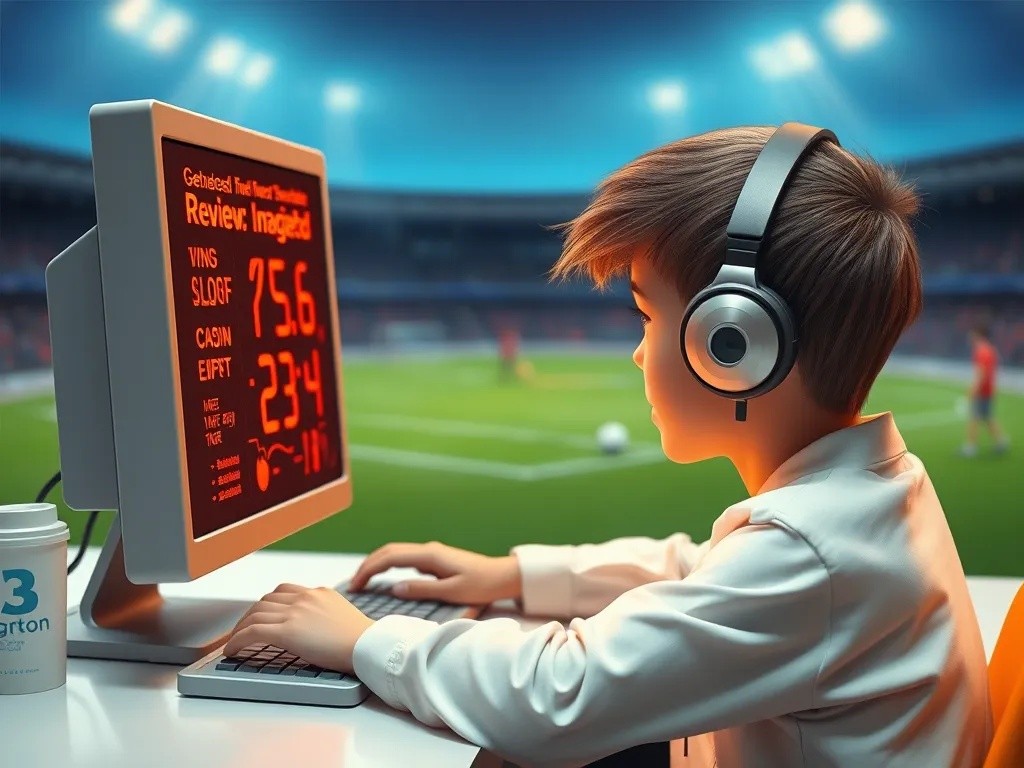In recent years, there has been a significant advancement in the field of Artificial Intelligence (AI) and Augmented Reality (AR). These technologies have become increasingly popular and have the potential to enhance virtual experiences in various fields such as gaming, education, healthcare, and...
Computer Invented a New Sport by Itself

In an unprecedented breakthrough that blurs the lines between artificial intelligence and athletic innovation, a sophisticated computer system has autonomously designed and developed an entirely new sport. This remarkable achievement represents a significant milestone in AI creativity and challenges our understanding of what machines can accomplish independently.
The Birth of "Quantum Tag"
The AI system, developed by researchers at the Institute for Computational Creativity, spent months analyzing thousands of existing sports, their rules, equipment requirements, and player dynamics. Through deep learning algorithms and pattern recognition, the computer identified gaps in current athletic offerings and synthesized elements from various disciplines to create something entirely new.
The result is "Quantum Tag," a hybrid sport that combines elements of traditional tag, parkour, and augmented reality gaming. Players wear specialized sensors and AR headsets while navigating a dynamic playing field that changes in real-time based on algorithmic calculations.
How Quantum Tag Works
Basic Rules and Objectives
The computer designed Quantum Tag with surprisingly sophisticated gameplay mechanics. Two teams of five players each compete in a bounded area equipped with moveable obstacles and digital projection systems. The objective is to collect virtual "quantum particles" that appear at random locations while avoiding being "tagged" by opponents.
What makes this sport unique is its adaptive rule system. The AI continues to modify game parameters in real-time, adjusting factors such as:
- Player speed multipliers based on performance
- Obstacle positioning and movement patterns
- Quantum particle spawn rates and values
- Environmental hazards and bonuses
Equipment and Technology
The computer specified detailed requirements for specialized equipment, including lightweight AR headsets, motion-tracking suits, and haptic feedback devices. The playing field features programmable floor panels that can create elevation changes and moving platforms controlled by the AI system.

The AI's Creative Process
Researchers were amazed by the computer's methodical approach to sport creation. The AI first analyzed fundamental human movement patterns, then studied psychological factors that make activities engaging and competitive. It considered safety requirements, accessibility for different skill levels, and even spectator entertainment value.
The system ran millions of simulations, testing various rule combinations and equipment configurations. It evaluated each iteration based on criteria such as physical challenge, strategic depth, and potential for skill development. The final design emerged after the AI rejected over 10,000 preliminary concepts.
Testing and Human Response
Initial Trials
When researchers first tested Quantum Tag with human volunteers, the results exceeded expectations. Players reported high levels of engagement and described the experience as "addictive" and "unlike anything they'd played before." The sport demands both physical fitness and quick strategic thinking.
Professional athletes who participated in trials noted that Quantum Tag challenges different muscle groups and cognitive skills compared to traditional sports. The unpredictable nature of the AI-controlled environment keeps players constantly adapting their strategies.
Competitive Potential
Early tournaments have demonstrated Quantum Tag's spectator appeal. The combination of physical action and digital elements creates a visually stunning experience that translates well to broadcast media. The AI system even generates real-time commentary and analysis during matches.
Implications for the Future
This breakthrough raises fascinating questions about the role of artificial intelligence in creative endeavors. If computers can independently design engaging sports, what other aspects of human culture might they revolutionize? The success of Quantum Tag suggests that AI systems may possess untapped potential for innovation in entertainment, education, and social interaction.
Sports organizations worldwide are now exploring partnerships with AI developers to create new competitive formats. The computer's ability to continuously evolve and refine its sport design offers unprecedented opportunities for dynamic, ever-changing athletic experiences.
As we witness the dawn of AI-created sports, we're reminded that the boundaries between human and machine creativity continue to blur in unexpected and exciting ways. Quantum Tag may be just the beginning of a new era in athletic innovation.



